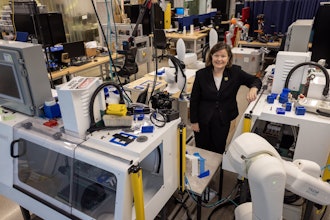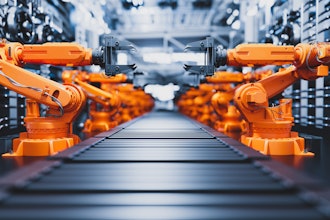There are a lot of tires on an 18-wheeler. Big ones, too. Monitoring their wear and tear, having them maintained and replaced is a big job for trucking companies.
What if the trucker could offload all of that concern to the tire manufacturer? The tires, outfitted with tiny sensors, automatically monitor themselves, relaying the state of their condition back to the manufacturer in real time. The manufacturer, aware of the condition of every tire in the trucker’s fleet, schedules replacement and maintenance at regular intervals.
For the trucker, mileage is increased. Safety is improved. Liability is reduced. And processes for maintaining potentially thousands of tires are streamlined or eliminated. The manufacturer, meanwhile, takes on the work, the risk — and the reward. Instead of just selling tires, they’re now selling miles.
This is just one example of how data can transform a manufacturer’s business model. The technology marketplace is full of buzz today about big data and the Internet of Things, but the fact is, today’s more powerful sensors and devices, connected to back-end systems, analytics software and the cloud, are transforming industries — right now. With the rise of these connected operations, manufacturing executives are not only finding new ways to automate and create efficiency, they are also focusing on a big new opportunity for revenue growth: services.
This is no passing trend. According to recent research by IDC, commissioned by Microsoft, manufacturers stand to gain $371 billion in value from data over the next four years, using it not only to increase productivity and cut the fat out of processes, but to better manage customer relationships and improve their products and services. In the U.S., President Obama recently announced a $140 million federal commitment to support two new institutes as they help companies tap into this growing “data dividend.” One of them is DMDI, or digital manufacturing and design innovation. In Germany, Europe’s longtime center for manufacturing, they’re calling it Industrie 4.0 — no less than the fourth industrial revolution.
For countries like the U.S., Germany and others around the world, phase one of this transformation will involve mining ever-growing volumes of data to find new efficiencies, connecting factory floors and back-end IT into one holistic “intelligent system.” By wringing costs out of their processes in this way, manufacturers in developed economies can relieve some of the pressure they’re feeling to produce their wares more cheaply in order to compete globally.
Everyone wants a leaner, more efficient factory floor, but in many ways, production efficiency tapping insights from data is just the low-hanging fruit. The next wave of opportunity lies in applying those insights to build efficiency and value across the supply and demand chain. Yes, there is a challenge in sharing sensitive operational data, but for most organizations, the rewards will outweigh the risks.
This trend is already leading to a big change in how manufacturers view themselves and their relationship with customers. The evolution of the car is a telling example. Technology in the car has become a top driver of purchasing decisions, leading auto manufacturers to rethink their customer relationships. In the past, those relationships largely ended at the point of invoicing the sale, but today, an auto manufacturer is also a technology provider. Managing the customer’s experience post-sale and engaging the customer throughout the vehicle ownership lifecycle with rich, ongoing online services has become at least as important, if not more so.
This is where the right data captured at the right time and delivered to the right employee within an organization — what is often referred to as the democratization of data — can be a game changer. Once the manufacturer connects discrete data sources across devices, processes, people and external networks, data evolves into insight. Replacement parts and updates can be sent proactively, repairs can be scheduled, and inventory needs and expenses can be anticipated much more accurately. All of these are workflows that have traditionally taken a lot of effort, energy and disruption on the part of customers.
Data can unlock intelligence on these and many other business processes to drive operational efficiencies. But for manufacturers looking beyond cost savings to revenue growth, services represent new and ongoing sources of revenue that can be more appealing than just selling the device or the equipment. Think of selling a subscription as opposed to a single magazine, or servicing equipment installed in New York from your headquarters in Italy.
Of all the decisions that manufacturers need to make as they embark on this journey, looking at the wingspan of their technology partners may be the most important. Trust, familiarity of software applications for workers, domain expertise, intelligent and secure cloud services for connecting machine-generated data, a scalable big data cloud platform that spans devices and services, interoperability, a rich partner ecosystem — these are but a few of the criteria manufacturers are using to evaluate their technology choices as they move toward that fourth industrial revolution.
The potential rewards for organizations that embrace a data culture in the world of ubiquitous computing are clear. And despite the unknowns, the lure of that potential is already creating a new wave of innovation for the industry. The only question for manufacturers now is, will they ride that wave, or will it knock them off their feet?






















